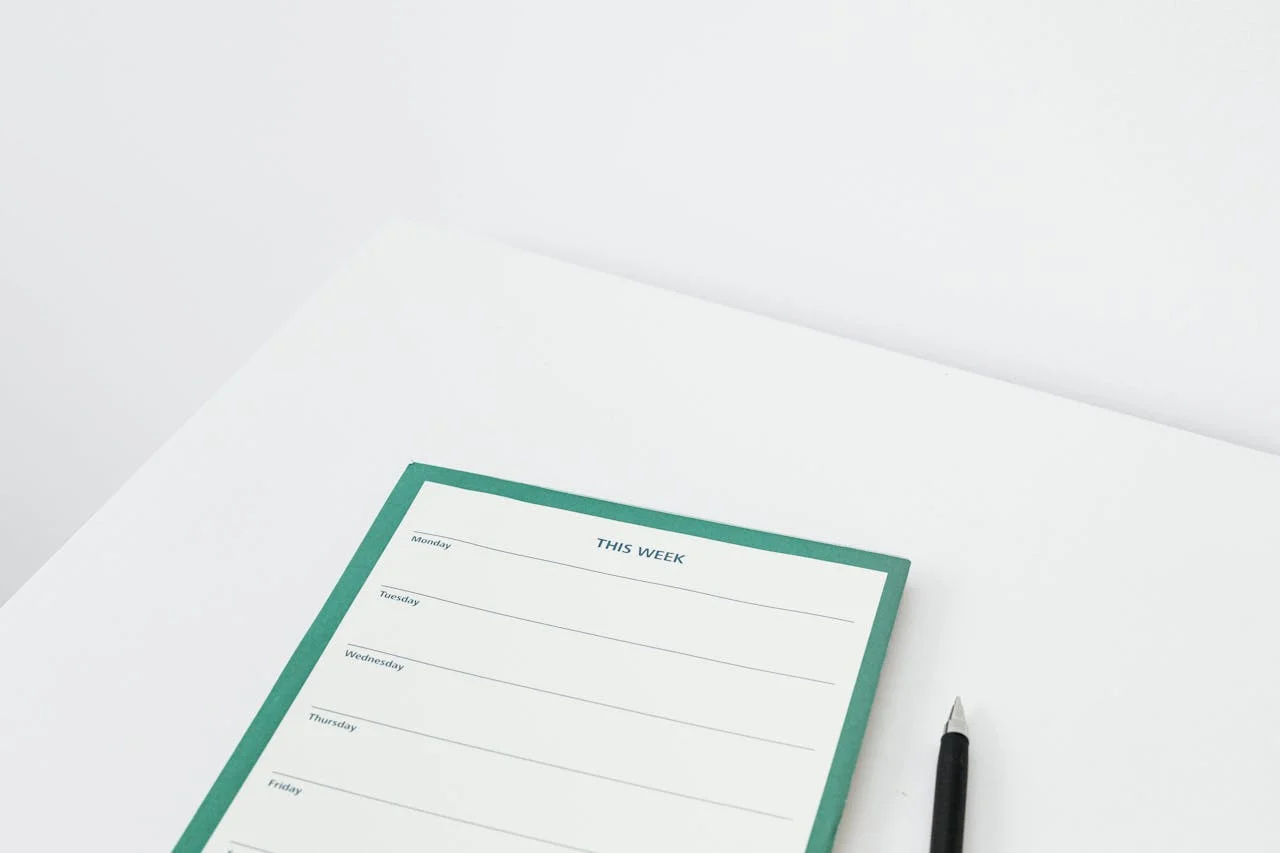
You know that overwhelming feeling when your life resembles a tornado aftermath—sticky notes everywhere, your phone buzzing with seventeen different app notifications, and that growing pile of “important” papers mocking you from the corner? Here’s the thing: you don’t need months of Marie Kondo marathons to reclaim control. With just seven focused days and a strategic approach, you can transform your chaotic existence into something that actually works for you, and the best part is where we start tomorrow.
Day 1: Mind Dump and Priority Assessment
Since you’re probably feeling overwhelmed by the sheer chaos of your daily existence—trust me, I’ve been there with sticky notes scattered across my desk like confetti after a very sad party—today’s mission is to perform what productivity experts call a “mind dump,” which is fundamentally emptying your brain’s overstuffed junk drawer onto paper.
Grab whatever writing tool you prefer and spend twenty minutes scribbling down everything swirling in your head: overdue bills, that awkward conversation you’re avoiding, weekend plans, work deadlines, grocery lists. Research from UCLA’s psychology department shows that simply writing tasks down reduces cortisol levels by 25%. After your brain-emptying session, circle three items that’d create the biggest positive impact if completed this week—these become your power priorities.
Day 2: Digital Declutter and System Setup

The digital chaos cluttering your devices right now—those 47,000 unread emails, desktop screenshots from 2019, and the seventeen different note-taking apps you’ve downloaded but never actually used—is probably draining your mental energy faster than your phone battery dies when you need GPS directions most.
Today’s mission: digital detox meets strategic setup. Start with your phone’s home screen—delete apps you haven’t touched in three months, organize the keepers into folders labeled by function, not aesthetics.
Next, tackle your email: unsubscribe ruthlessly, create three folders (Action, Waiting, Archive), and batch-process those notifications into submission.
Finally, choose one productivity system—whether it’s Notion, Todoist, or good old Google Calendar—and commit. Having twelve half-empty systems beats you every time; one fully-utilized system makes you unstoppable.
Day 3: Physical Space Organization
While your phone might finally be running smoothly after yesterday’s digital purge, your physical space is probably still staging its own rebellion—you know, that chair that’s become a clothing museum, the kitchen counter playing host to three weeks’ worth of mail, and the mysterious pile in your bedroom corner that’s achieved its own ecosystem.
Today’s mission: reclaim your territory using the “zone-clearing method”—tackling one specific area at a time rather than ping-ponging around like a caffeinated squirrel. Start with your most-used space: if you work from home, it’s your desk; if you’re always cooking, hit the kitchen first. Grab three containers labeled “keep,” “donate,” and “trash.” Research shows that organized environments reduce cortisol levels by 23%, so you’re literally creating a healthier space for peak performance.
Day 4: Time Management and Schedule Optimization

Now that your physical space has stopped looking like a tornado hit a thrift store, it’s time to tackle the invisible chaos that’s probably been running your life: your relationship with time itself. Today you’re conducting a time audit—tracking every fifteen-minute block to expose where your hours actually disappear (spoiler: it’s probably social media and “quick” email checks).
Use time-blocking: assign specific tasks to designated chunks, creating boundaries that protect your priorities from random interruptions. Research shows people who schedule their days accomplish 40% more than those who wing it.
Batch similar activities together—all calls in one block, all emails in another—to minimize context switching, which literally drains your brain’s glucose reserves and leaves you feeling scattered.
Day 5: Paper Management and Document Systems
Where do important documents go to die in your house—that mysterious kitchen drawer, the “temporary” pile on your desk, or perhaps scattered across three different rooms like confetti from a bureaucratic explosion? Today we’re tackling this paper chaos head-on: creating a filing system that actually works for your lifestyle, not against it.
Start by gathering every important document from its current hiding spot—tax returns, insurance papers, warranties, medical records. Sort them into broad categories: financial, legal, medical, household. Then create a simple filing system using either physical folders or digital scans (I recommend both for critical documents like passports). Label everything clearly, because future-you won’t recollect your cryptic organizational genius.
Finally, establish one designated spot for incoming mail and bills—no more kitchen counter archaeology expeditions.
Day 6: Habit Formation and Routine Building
You’ve probably tried to build good habits before—maybe you downloaded a meditation app that now sends guilt-inducing notifications, or declared you’d wake up at 5 AM only to hit snooze until your original wake-up time anyway.
Here’s the thing: habit formation isn’t about willpower—it’s about strategic design. Research shows successful habits follow a simple loop: cue, routine, reward.
Start small today by identifying three keystone habits that’ll create ripple effects throughout your life—think morning routines, evening planning sessions, or weekly meal prep. Stack new habits onto existing ones: after I pour my coffee, I’ll review my daily priorities.
Focus on consistency over perfection; even two-minute habits compound into significant changes when you maintain them daily.
Day 7: Review, Refine, and Future-Proof Your Systems

Congratulations—you’ve built the foundation, but here’s what separates organized people from those whose systems crumble after two weeks: they treat organization like software that needs regular updates, not a one-and-done installation.
Today you’re conducting a strategic audit of everything you’ve built, because even the best systems need tweaking—trust me, I’ve watched my color-coded filing system turn into chaos when I didn’t adapt it to my changing workload.
Here’s your review protocol:
- Test each system under stress: Run through your busiest day scenario and identify where bottlenecks occur
- Eliminate redundancies: Merge overlapping tools and processes that create friction rather than flow
- Build in flexibility buffers: Add 20% extra time to schedules and create backup plans for your most critical systems
Future-proof by scheduling monthly system reviews.
Essential Tools and Resources for Success
Which tools actually deserve a spot in your organizational arsenal versus the ones that’ll gather digital dust faster than that expensive planner you bought last January? Focus on these power players: a reliable digital calendar that syncs across devices—Google Calendar or Apple Calendar work brilliantly for most people.
You’ll want one task manager that feels intuitive: Todoist for detail lovers, Apple Reminders for simplicity seekers, or Notion for those who enjoy customization. Don’t overlook analog tools—a quality notebook beats phone notes when brainstorming, and physical folders still outperform digital ones for important documents.
The secret isn’t collecting tools; it’s mastering the few that amplify your strengths while covering your organizational blind spots.
Common Obstacles and How to Overcome Them
Even the most foolproof organizational systems can fall apart when life throws you curveballs—and trust me, it will. Research shows that 92% of people abandon their organizational goals within the first month, but you’re not going to be part of that statistic.
Here’s how to tackle the three biggest obstacles that’ll try to derail your progress:
- Perfectionism paralysis: When you’re stuck tweaking your color-coded calendar for the hundredth time instead of actually using it, you’ve hit this wall. Set a “good enough” standard—your system needs to work, not win design awards.
- All-or-nothing thinking: Missing one day doesn’t mean total failure. Bounce back immediately, no self-flagellation required.
- Overwhelm creep: Start smaller than you think necessary, then build momentum.
Maintaining Your Organized Life Beyond Week One
The real challenge isn’t getting organized—it’s staying that way when your motivation inevitably crashes harder than your phone battery at 3% and no charger in sight. You’ve conquered week one, but now what? Research shows that 92% of people abandon their goals within three months—don’t become another statistic.
Here’s your power move: implement the “two-minute rule” religiously. If something takes less than two minutes, do it immediately rather than letting it pile up like laundry on your bedroom chair.
Schedule weekly “maintenance sessions”—fifteen minutes every Sunday to reset your systems before chaos creeps back in.
Most importantly, embrace imperfection. You’ll slip up, your desk will get messy again, and that’s completely normal. The difference between organized people and everyone else? They bounce back faster, treating setbacks as data points rather than personal failures.
Conclusion
You’ve got this—honestly, you do. One week might seem impossibly short to transform your chaotic life, but you’ve just proven it’s entirely doable when you tackle things systematically. Sure, you’ll stumble (we all do), but now you’ve got the framework to bounce back quickly. Recall: organization isn’t about perfection, it’s about creating systems that work for your beautifully messy, wonderfully human life. Keep going—you’re already winning.




